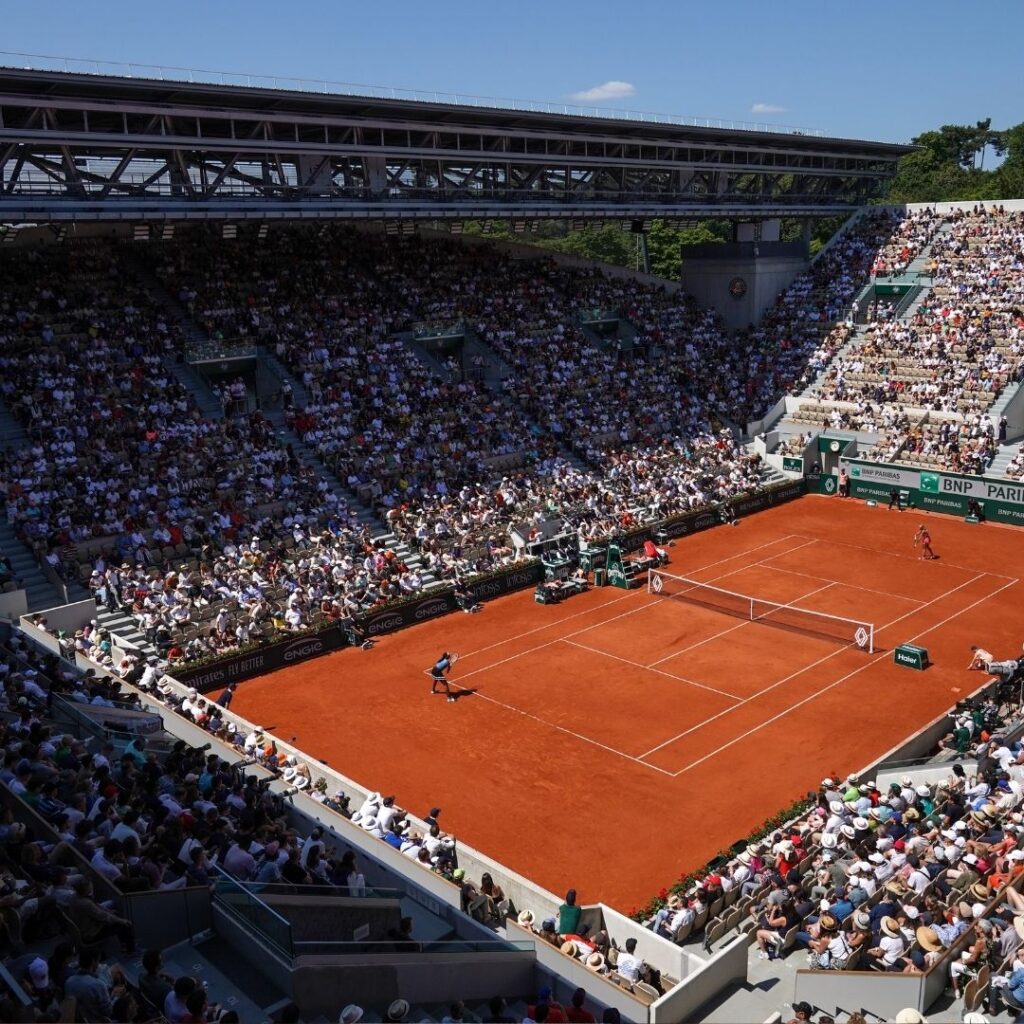Roland Garros, the jewel in the crown of clay-court tennis, isn’t just a sporting event; it’s a meticulously crafted global brand. Its enduring appeal and commercial success are underpinned by a sophisticated marketing strategy that blends tradition with innovation, leveraging its unique identity and the passion of its global fanbase.
Building on Heritage and Authenticity
At the heart of Roland Garros’ marketing strategy lies its rich history and authentic connection to the sport. Unlike Wimbledon’s pristine green lawns or the modern hard courts of the US and Australian Opens, the red clay is a defining and marketable characteristic. It evokes images of grueling rallies, dramatic slides, and a distinct style of play. This unique identity is consistently emphasized in all marketing materials, from television broadcasts to social media campaigns.
The tournament strategically leverages its French heritage and Parisian setting. Images of the Eiffel Tower, classic French architecture, and the vibrant atmosphere of Paris are often interwoven into promotional content, associating the event with elegance, culture, and a sense of occasion. This resonates with a global audience seeking not just a sporting event but an experience.
Cultivating a Premium Brand Experience
Roland Garros positions itself as a premium sporting and entertainment experience. This is reflected in various aspects of its marketing:
- Ticketing and Hospitality: Exclusive hospitality packages, offering premium seating, dining, and access, cater to a high-end clientele. The demand for tickets often outstrips supply, creating an aura of exclusivity and desirability.
- On-site Experience: The stadium complex is designed to offer a memorable experience beyond the matches. High-quality food and beverage options, branded merchandise, and interactive fan zones contribute to a sense of immersion and engagement.
- Brand Partnerships: Roland Garros strategically aligns itself with prestigious international brands that share its values of quality, performance, and elegance. Long-standing partnerships with companies like Peugeot, Longines, and Lacoste reinforce this premium image and provide significant revenue streams. These partnerships are often integrated into the tournament experience through on-court branding, promotional activities, and exclusive content.
Engaging a Global Audience Through Digital Innovation
In today’s digital age, Roland Garros excels at engaging its global fanbase through a multi-faceted digital strategy:
- Content Creation: The tournament produces a vast array of high-quality content across various platforms, including live streaming of matches, behind-the-scenes footage, player interviews, historical highlights, and engaging social media posts. This ensures fans around the world can connect with the event in real-time and on demand.
- Social Media Engagement: Roland Garros maintains a strong presence on platforms like Twitter, Instagram, Facebook, TikTok, and YouTube, tailoring content to each platform’s audience. Interactive polls, Q&A sessions with players, user-generated content campaigns, and real-time updates keep fans engaged and foster a sense of community.
- Mobile App and Website: The official Roland Garros app and website provide comprehensive information, including schedules, scores, player profiles, news, and ticketing information. They serve as central hubs for fans to stay connected and plan their experience, whether attending in person or following remotely.
- Data Analytics: Roland Garros utilizes data analytics to understand fan behavior, personalize content delivery, and optimize marketing campaigns for maximum impact and reach.
Leveraging Star Power and Storytelling
The narratives surrounding the players are a crucial element of Roland Garros’ marketing strategy. The tournament actively promotes the rivalries, personal stories, and triumphs of the athletes, creating emotional connections with the audience.
- Player Promotion: Star players like Rafael Nadal, Novak Djokovic, Iga Świątek, and Coco Gauff are heavily featured in promotional materials, leveraging their global recognition and fan base. The tournament highlights their journeys, their dedication to the sport, and their achievements on the clay.
- Storytelling: Roland Garros excels at weaving compelling narratives around the matches and the players. These stories are shared through video packages, articles, social media posts, and commentary, adding depth and drama to the viewing experience. The inherent unpredictability and physicality of clay-court tennis often lend themselves to captivating storylines.
Expanding Reach and Accessibility
While maintaining its premium image, Roland Garros also strives to expand its reach and make the tournament more accessible to a wider audience:
- Broadcasting Partnerships: Strategic partnerships with international broadcasters ensure that the tournament is televised in key markets around the world, maximizing its global visibility.
- Digital Accessibility: Live streaming and on-demand content on digital platforms allow fans who cannot attend in person to still experience the excitement of Roland Garros.
- Fan Engagement Initiatives: Initiatives like fan zones, interactive experiences, and social media contests aim to engage a broader audience and make the tournament more inclusive.
Adapting to Evolving Trends
Roland Garros’ marketing strategy is not static; it continuously adapts to evolving trends in media consumption and fan engagement. The tournament embraces new technologies and platforms to connect with younger audiences and maintain its relevance in a rapidly changing landscape. This includes exploring opportunities in areas like esports, virtual reality, and influencer marketing.
The marketing strategy of Roland Garros is a carefully orchestrated blend of tradition, premium branding, digital innovation, and compelling storytelling. By leveraging its unique identity, cultivating a high-quality experience, engaging a global audience through digital channels, and promoting the captivating narratives of its players, Roland Garros has cemented its position as one of the most successful and recognizable sporting events in the world. As the tournament continues to evolve, its commitment to these core principles will undoubtedly ensure its enduring appeal and commercial success for years to come.



